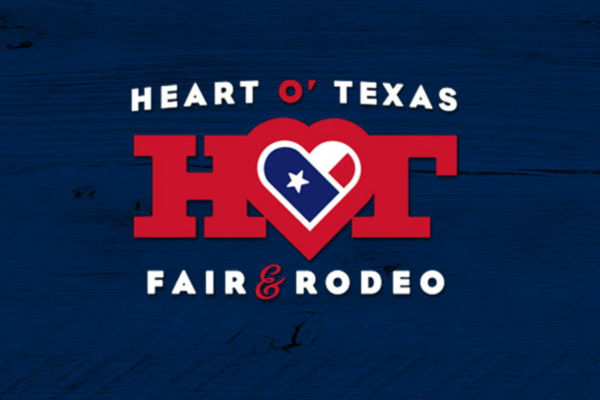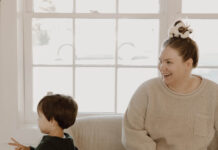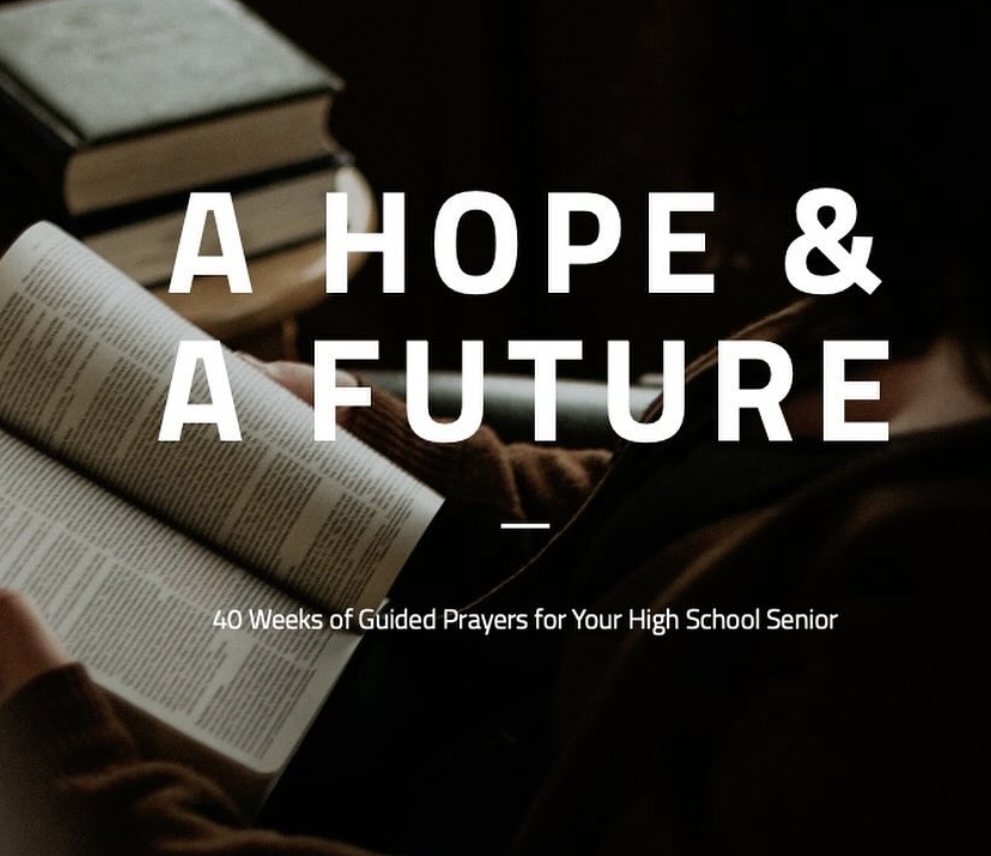Lisa Corcoran with The Confident Hound knows changing our habits is one the hardest things to do. Attempting it with an animal that doesn’t speak your language, gets a bit trickier. Then when you add in the busy schedule and exhaustion of being a mom, you’ll find that doesn’t leave much room for training the family dog. But that’s okay! She believes in working smarter, not harder. That’s why she starts dog parents off with small steps they can take to address their concerns. Check out her favorite “no-training” dog training tips below!
- Think Outside The Walk
Most people use neighborhood walks as their dog’s main form of physical exercise. Simultaneously, the majority of my clients struggle with walks (e.g., leash pulling, reactivity, leftover energy). I recommend taking a break from neighborhood walks and trying other forms of exercise.
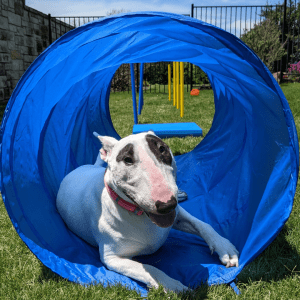
Dogs were built for goal-directed movement, like herding cattle, pulling carts, or chasing rats out of the home. You can simulate this by playing fetch, tug-of-war, chasing a flirt pole, doing agility obstacles, or going for a swim. This way, your dog gets physical and mental exercise that fills their emotional cup.
- Ditch The Food Bowl
Does your dog get a surge of energy in the morning and evenings, perfectly aligning with when you’re exhausted? This is because our dogs’ ancestors went hunting at dawn and dusk. Fast forward to today where we plop their food in a bowl. Your dog’s lifestyle may have changed, but their instincts have not. They miss hunting for their meals, which is why they resort to digging through trash cans.
A great solution is to ditch the bowl and put their food in a mobile puzzle toy instead. This feeds their need to work for their meal, slows them down, and keeps them busy while you get the kids ready. Dog trainers refer to strategies like this as “canine enrichment” or “giving your dog a job”. My clients often say that enrichment is game changer, which is why I compiled all my knowledge and tips into a digital Canine Enrichment Guide.
- Stash Treats Around The Home
Dogs are often doing good behaviors throughout the day, but it goes unnoticed and unrewarded. To remedy this, I created “Good Dog” jars. These small mason jars are filled with non-perishable dog treats and put in strategic spots around the home. When you catch your dog doing something awesome, like sitting politely while you prep lunches, you’ll have a reward right at hand. Taking advantage of these “good dog” moments is one of the most efficient ways to train a dog.
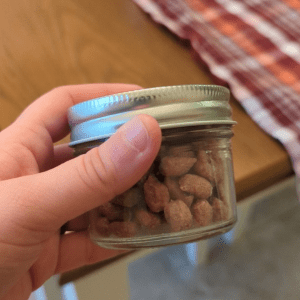
The jars are also useful for redirecting unwanted behaviors. Let’s say your dog stole an off-limits item, such as a dirty sock. Instead of chasing them or trying to pry it out of their mouth, I suggest trading with your dog. Grab a handful of treats from the nearest jar, hold them in a closed fist at your dog’s nose, and let your dog mull over this offer. Once they release the object, open sesame! Grab the item quickly while they’re snacking. Over time, your dog will start dropping or even bringing the item to you before you can make your offer.
- Embrace The Gates
There are no ethical training solutions that can prevent your dog from playing with toilet paper or surfing the kitchen counters when you’re absent. For this reason, I highly recommend using gates and closed doors to restrict their access to areas that tempt them.
Also, gates don’t have to be an eye sore! I love these retractable gates that we have at the entrance to our kitchen. When not in use, they tuck out of the way and out of sight. I also love using freestanding, foldable gates for creating safe boundaries between dogs and young children. When company comes over, you can always store them in a closet.
- Advocate For Your Dog
This last one goes out to my fellow moms of dogs with big feelings. I’m often contacted after a dog has endured a stressful experience with a serious outcome. Nearly every instance is one that could have been prevented. So let me give you permission to avoid experiences (when possible) that upset your dog.
Likewise, please hear this: Your dog does NOT have to greet strangers, play at dog parks, join you on restaurant patios, or take daily neighborhood strolls in order to be a “normal” dog or live a happy life. It is 100% okay to leave your dog home, skip the walk, decline a child’s request to pet your dog, or let your dog have their space from guests. These choices do not make you a “bad dog mom”. In fact, they make you a GREAT mom because you are acting as your dog’s voice and setting them up for success.
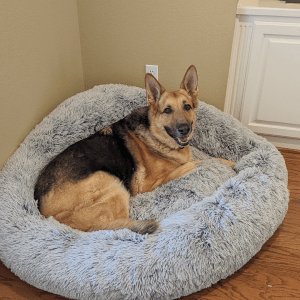
Effectively changing your dog’s habits (or your own!) depends on being mentally committed and consistent in your actions towards a goal. Given that, it’s okay to acknowledge when you’re not currently in that headspace or season of life. Until then, these tips will help you see some small wins, build your confidence, and enhance the relationship you have with your dog. When you feel ready to learn more about training your dog, just reach out to get the conversation started.
Lisa Corcoran moved to Waco with her husband in 2018 for her job in military mental health and it was one of the best decisions they ever made. Since, they have moved  twice within Waco, lost their first dog to cancer, volunteered with rescue dogs, adopted one of those rescue dogs, welcomed the coolest little boy, and started a dog training business. Lisa is a total nerd about cognition, behavior, and the process of learning – whether it’s helping a veteran with PTSD heal, teaching a dog a new skill, watching her toddler unlock a new ability, or working with her own ADHD-brain to form lasting habits. Lisa is often seen mingling at Coffee + Community, but recharges at home under a cozy blanket. Her 3 most rewatched TV shows are Supernatural, The Office, and Parks & Rec. Lisa’s emotional cup is filled by jigsaw puzzles, dancing (usually at REFIT), baking delicious treats, and spending time in nature with her family.
twice within Waco, lost their first dog to cancer, volunteered with rescue dogs, adopted one of those rescue dogs, welcomed the coolest little boy, and started a dog training business. Lisa is a total nerd about cognition, behavior, and the process of learning – whether it’s helping a veteran with PTSD heal, teaching a dog a new skill, watching her toddler unlock a new ability, or working with her own ADHD-brain to form lasting habits. Lisa is often seen mingling at Coffee + Community, but recharges at home under a cozy blanket. Her 3 most rewatched TV shows are Supernatural, The Office, and Parks & Rec. Lisa’s emotional cup is filled by jigsaw puzzles, dancing (usually at REFIT), baking delicious treats, and spending time in nature with her family.




